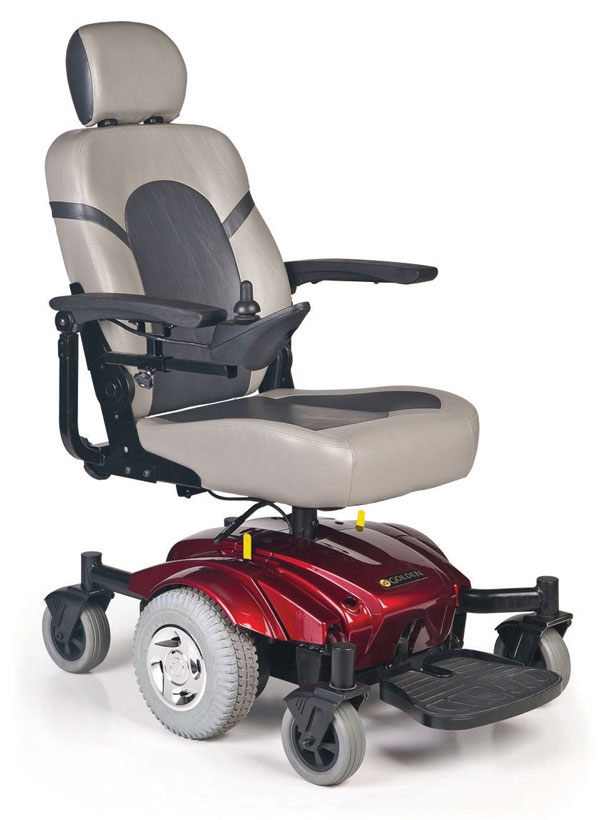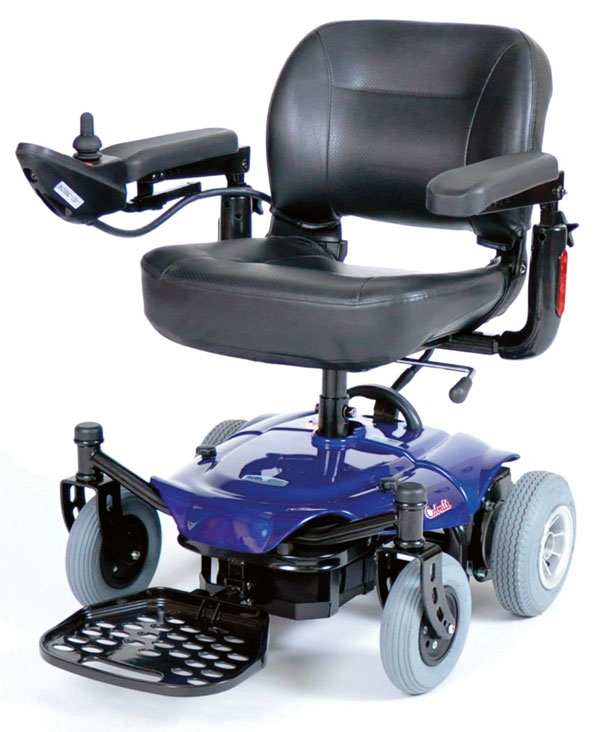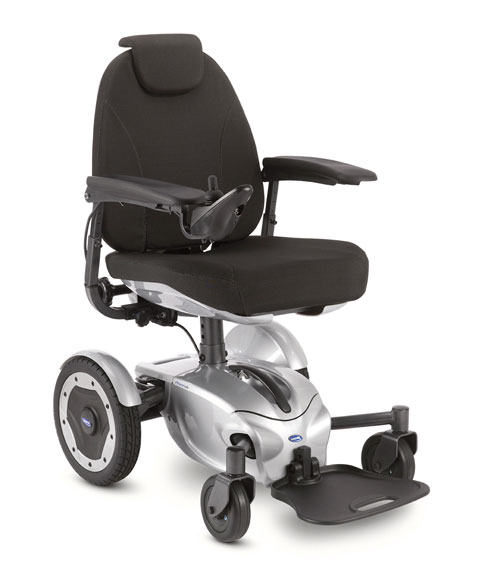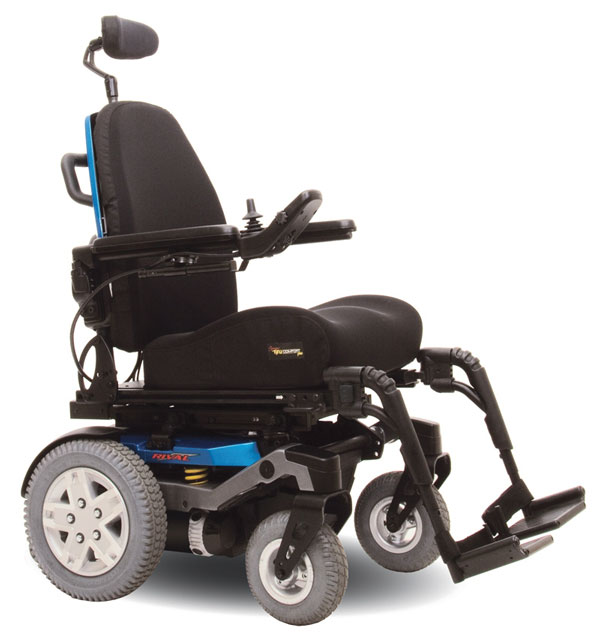Optimism for the 2012 power chair market is in short supply these days, with most manufacturers admitting to flat or down sales with little more than a third of the year to go. The relatively poor sales performance can be traced primarily to Medicare competitive bidding and capped rental.
 Mike Wahrmund, director of marketing in the Power Mobility Division at Drive Medical, believes those factors are forcing smaller providers out of the industry; a trend that has also affected overall sales.
Mike Wahrmund, director of marketing in the Power Mobility Division at Drive Medical, believes those factors are forcing smaller providers out of the industry; a trend that has also affected overall sales.
“Power wheelchairs are no longer a purchase option,” Wahrmund says. “They are now solely rental items. Providers who used to get the full reimbursement amount for power chairs in one fell swoop are now seeing that payment broken out over 13 months. That is hurting their cash flow.”
Julie Jackson, director of the Mobility and Seating Business Unit at Invacare, has seen flat sales for Group 2 power chairs, and she anticipates much of the same, at least in the foreseeable future. “We saw a vast change in the market in 2011 with the introduction of the capped rental market in Group 2 as well as the first nine metropolitan statistical areas of national competitive bidding,” she says. “We fully expect to continue to see changes within this market later this year with the prepayment review, as well as the next round of national competitive bidding in 2013.”
According to Paul Komishock, general manager of Government Affairs at Pride Mobility—of which Quantum Rehab is a division—Medicare, Medicaid and private insurance can still be reliable payers for power chairs if the obstacles can be navigated. “While many states have looked to reduce Medicaid funding as a whole,” he says, “the good news with this payer and private insurance is they have clear criteria for determining coverage of a power wheelchair.”
“Providers are seeing their operating costs increase due to checking on patients and picking up the equipment when necessary,” adds Joe Chesna, national sales director at Pride Mobility. “Providers can offset this is by providing a quality product. Manufacturers that are looking to partner with providers in the capped rental landscape are making products that are able to withstand a reasonable amount of use and can be easily refurbished and serviced.”
Power Chairs or Scooters?
 Power chairs are usually based on medical necessity for patients with diagnosed medical conditions that affect mobility, while scooters are still more of an option for people who don’t get around as well as they once did.
Power chairs are usually based on medical necessity for patients with diagnosed medical conditions that affect mobility, while scooters are still more of an option for people who don’t get around as well as they once did.
It’s rare for doctors to prescribe scooters, so these items remain in the retail mode. For providers struggling with power chair reimbursement, Wahrmund does not hesitate to advise a strategy switch. “If Medicare changes have affected our providers’ power wheelchair business, we encourage them to move into the scooter business,” he says, “because those are cash items and they are receiving a good full payment right from the start.”
For patients who eventually end up with a power chair, accompanying accessories can provide another sales opportunity. Ramps and lifts are not for dabblers, but those who make the effort can establish a thriving secondary market. “Providers should discuss the benefits of a ramp or lift with every power wheelchair they sell,” Chesna says. “These are essential items for any patient using a power wheelchair. A ramp can be used for improved accessibility, and a lift can be used for transportation. These are cash sale items, and a great way to improve profitability and cash flow while enhancing the client’s overall lifestyle.”
While the vast majority of power chairs are still covered by insurance or Medicare, the nature of government payment may drive more chairs toward the retail/cash market. “We have one that probably sits right on the cusp,” says Wahrmund. “We call it the Cobalt, and it’s compact and transportable.” Drive introduced two new Cobalt models last month—the X14 (which can be easily broken apart and transported) and the X16. Both products fall under the K0814 and K0816 codes that are not commonly covered by many other manufacturers. “We introduced those for the private insurance and workers’ compensation organizations,” Wahrmund explains. “It opens us up to some additional markets.”
Most power chairs occupy all payer categories, but there are some—such as the LiteRider PTC from Golden Technologies—that are not coded and intended only for cash. “Our focus as a manufacturer is consumer power and cash,” says C.J. Copley, executive vice president of sales and marketing at Golden Technologies. “We believe that we have the strongest consumer power line for dealers in that segment, which is extremely turbulent yet still viable. Cash power chairs is a category that is bound to grow as Medicare continues to make changes.”
The best selling power chair at Golden Technologies is the Compass Sport GP605, a chair that sits firmly in the Medicare category. “The Compass Sport features inline motors, better battery efficiency, easy access to the batteries without removing the seat and excellent maneuverability with minimal high centering because of its unique chassis design,” says Patricia O’Brien, director of marketing for Golden Technologies. “The Compass Sport GP605 is the only single-post power chair with strong forward stability that can turn in its own footprint.”
 At Invacare, the Pronto M41 and Pronto M51 continue to be strong sellers as largely Medicare reimbursed items. The company will soon introduce a non-coded power chair called the ProntoAir Personal Transporter. “It features a cool new look and transportability,” Jackson says. “Invacare will feature the ProntoAir at our Medtrade booth.”
At Invacare, the Pronto M41 and Pronto M51 continue to be strong sellers as largely Medicare reimbursed items. The company will soon introduce a non-coded power chair called the ProntoAir Personal Transporter. “It features a cool new look and transportability,” Jackson says. “Invacare will feature the ProntoAir at our Medtrade booth.”
In an attempt to sync with the realities brought on by elimination of the purchase option, Pride Mobility officials are touting a line of “rental ready” products designed specifically to withstand the rigors of the rental environment. Chesna says these products are defined by “signature traits” that include Jazzy Armor, which protects the unit and components from daily wear and tear; color-through shrouds that hide scratches and provide a better visual appearance; and improved powder coating that protects against corrosion and offers increased durability. Pride officials plan to display additional rental ready products at Medtrade.
In terms of retail products, Pride also recognizes the opportunities a cash-sales power base provides. They currently offer the Go-Chair and are continually developing products to help providers tap into this key market segment.
Front, Rear and Mid-Wheel Drive
 The K0823 code is the most commonly reimbursed, and manufacturers have responded with a variety of chairs that fit that code. At Drive, the company’s Medalist model fits this profile, while the Intrepid mid-wheel drive model has also performed well.
The K0823 code is the most commonly reimbursed, and manufacturers have responded with a variety of chairs that fit that code. At Drive, the company’s Medalist model fits this profile, while the Intrepid mid-wheel drive model has also performed well.
“You see a big move toward the mid-wheel drive which is sort of taking over the industry,” Wahrmund says. “Pride Mobility spearheaded that a few years ago. It works well inside the home with great turning radius. It’s primarily for indoor use, so that’s a big benefit.”
Pride Mobility essentially created the market for mid-wheel drive about 10 years ago, supplanting predominantly rear-wheel drive chairs in the process. Front-wheel drive is now starting to appear more often, so patients and clinicians have even more options.
Ultimately, manufacturers are banking on a predicted wave of patients who will crave those options. These much-hyped Baby Boomers are for real, and despite the economic and reimbursement challenges, the potent demographics are still in the industry’s favor.
“America’s Baby Boomers are turning 65 at a rate of one every 10 seconds, or 8,640 per day,” says Chesna. “Boomers are a viable, strong demographic with approximately $1.1 trillion in spending power. People are not sitting still. They want to stay active and independent.”
“There will always be people who need our products to live better lives,” O’Brien adds. “That won’t change no matter what Medicare does, and no matter what insurance companies do. There will always be a need. If we are doing things for the right reasons, taking care of people the right way, then it’s reasonable to be optimistic that we can continue to bring solutions to people who have problems.”
Sidebar
CMS Accepts Physician Templates for PMD Demo
In last minute changes to the Medicare Power Mobility Demonstration, the Centers for Medicare & Medicaid Services (CMS) announced on August 29 that it had accepted AAHomecare’s recommendation to allow physicians to use a clinical medical necessity template when documenting the face-to-face exam with a Medicare beneficiary. AAHomecare’s Complex Rehab and Mobility Council (CRMC) has developed a clinical medical necessity template for power mobility that complies with CMS’ announced policies. The template will be available to AAHomecare members. Equally important, CMS will allow physicians to utilize a template to assist in documenting medical need. The demonstration began on September 1 in California, Illinois, Michigan, New York, North Carolina, Florida and Texas. As of press time, CMS is also working to allow PMD providers to use the Electronic Submission of Medical Documentation (esMD) program when submitting prior authorization medical documentation. AAHomecare stated that it would prefer that the demonstration have started with this feature in place, but is pleased that CMS is working to have this capability up and running in the fall of this year. Learn more at www.aahomecare.org.
Sidebar
Online Resources
Drive Medical Design &
Manufacturing
www.drivemedical.com
Golden Technologies
www.goldentech.com
Invacare
www.invacare.com
Pride Mobility Products
www.pridemobility.com
Quantum Rehab
www.pridemobility.com/quantum




